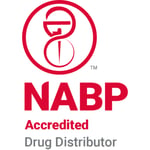Weighing the option of purchasing a unit-dose packaging system for your hospital pharmacy versus outsourcing your packaging
Hospitals continually look for ways to reduce costs and improve efficiency, and unit-dose drug repackaging and barcoding remain an option to achieve that. While some hospital pharmacies have the resources to manage drug repackaging in-house, for others, the time, space, and labor requirements remain a constant challenge. As a result, many hospital pharmacies are opting to outsource their unit-dose repackaging, allowing them to free up staff time, space and significantly reduce costs. So which option is best for your pharmacy – investing in packaging equipment and packaging in-house or outsourcing to a third-party unit-dose repackager?
To help your pharmacy decide, let's review a few things:
- The types of unit-dose repackaging systems available for in-house packaging
- Things you should consider before investing in packaging equipment
- The option of outsourcing unit-dose repackaging to a third-party
1. The types of unit-dose repackaging systems available for in-house packaging
High-volume unit-dose packaging machines are the most expensive but most efficient types. Some can package as many as 60 units per minute. Others can repackage multiple oral medications and produce multiple package sizes. In addition, barcoding labels are an important consideration, with two-dimensional barcoding offering greater accuracy. In one case study in Pharmacy Purchasing & Products Magazine, a large hospital system with more than 2,200 beds repackages about 25% of oral and liquid solids internally. The pharmacy uses three machines and a full-time employee dedicated to repackaging. When demand is higher, other members of the pharmacy staff may need to step in and assist with the workload. In addition, employee training and attention to detail is critical, as hi-speed packagers typically use a common chute in the packaging process, can be difficult to clean, and could lead to cross-contamination.
Liquid unit-dose packaging machines can pack as much as 30% faster than manual syringes. A fully automated liquid cup system may fill as many as 30 cups per minute, while a smaller, semi-automatic machine can produce up to 450 cups per hour. These units vary in cost and size, are safer and more efficient than manual processes, but also require upfront capital investment, dedicated space within your pharmacy, and high monthly maintenance fees. And packaging liquids can be messy.
Tabletop unit-dose machines are more efficient than manual unit-dose packaging and can save hospital pharmacies as much as four to five cents per package. According to the article "Small Hospital Benefits: Leveraging Automation to Maximize Efficiency," published in Boss Magazine, "Since a tabletop unit dose packaging machine can package at speeds of 60-120 packages per minute, by using this automated machinery, facilities can see a significant decrease by eliminating the manual packaging process." When using this type of machine, however, it’s imperative that your pharmacy have documented cleaning processes to minimize any risks of cross-contamination from one lot to the next.
Manual unit-dose repackaging is the most labor-intensive process. If a hospital pharmacy uses this method, a standardized packaging and barcoding process is critical. Safety, efficiency, time, and labor management all remain crucial aspects to control to ensure dosages are packaged and labeled correctly.
2. Things to consider before investing in in-house unit-dose packaging equipment
Beyond the equipment purchase or lease, there are other things to consider before your pharmacy decides to purchase packaging equipment and repackage in-house, including:
- Purchasing packaging materials (unit-dose solids, unit-dose liquids, oral syringes, ENFit syringes)
- Purchasing and maintaining a bar code printer
- Scheduling monthly maintenance and budgeting monthly maintenance fees
- Maintaining open communication with equipment manufacturers in case of equipment malfunction
- Maintaining software installations and upgrades
- Scheduling time to run, clean, and maintain equipment daily and in between packaging runs (will this happen around the clock, during overnight hours, or on weekends?)
- Finding space to house machinery, bulk medications, and packaging supplies
- Managing labor to run, clean, and maintain equipment (will a full-time technician handle this position, or will multiple employees need to be trained on equipment use?)
- Devoting time to ensure at least one person on staff maintains expertise in regulatory issues and quality control
- Creating Standard Operating Procedures (SOPs) to ensure pharmacy staff is properly trained on the repackaging equipment and cleaning procedures to reduce risk of cross-contamination
Whether you are a hospital pharmacist, pharmacy director, or pharmacy buyer, you must weigh the cost and labor benefits of maintaining an in-house system, outsourcing to a third-party repackager, or maintaining a balance of both.
Safecor Health makes it easy to figure out costs with a free ROI cost calculator tool.
3. Outsourcing unit-dose repackaging to a third-party
If the cost of maintaining repackaging in-house remains a challenge, there is another option to consider. When you factor in capital equipment expenditures, packaging materials, space requirements, regulatory expertise, and labor, outsourcing to a third party is a cost-effective solution. Many hospital pharmacies don't even realize this could be a viable option. Outsourcing benefits include:
- Reduced chance for dispensing errors
- Decreased waste and expired product
- Lower drug repackaging costs
- Reduced packaging errors
- Increased productivity with unit-dose packages ready for dispensing
- Increased patient safety with product repackaged in FDA and DEA compliant facility that adheres to cGMP requirements and guidelines for packaging processes, expiration dating, and packaging components
Outsourcing with a third-party repackaging vendor can allow your pharmacy to remove the challenging and time-consuming tasks of packaging and redirect your focus back on patient care.
If you work for a hospital pharmacy servicing less than 300 beds, are you using strategic packaging to drive cost savings?
Is your health system pharmacy dispensing medications for more than 300 beds? If so, you could save $400 to $700 per patient bed with outsourced unit-dose repackaging.
Sources:
https://www.pppmag.com/documents/V2N2/HV_Packers.pdf
https://www.pppmag.com/article/1808
https://www.euclidmedicalproducts.com/product_markets/hospital/
https://thebossmagazine.com/small-hospital-automation/
https://www.pppmag.com/article/2358/
https://www.datexcorp.com/all-you-need-to-know-about-pharmaceutical-repackagers/




